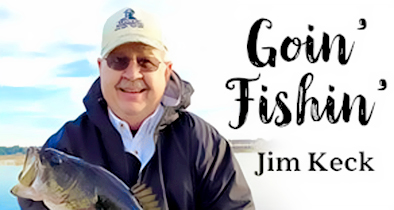
Hello Folks,
Well we are gettin’ a few cooler days, but we have had a couple of days that were kinda hot. I’m sure we will get some cooler days in a few weeks.
I talked to Kyle at Bitter’s B&T and he reports that the fishin’ is still slow in his area. He does have a few folks goin’ after specks in Lake Monroe and Lake Jesup, but the specks aren’t on fire just yet. Most folks that are fishin’ for’em, are driftin’ with minners.
Kyle reports that you can catch a few specks, but they ain’t bitin’ like they will this winter. If you go try and catch a few specks in Lake Jesup, try fishin’ under the Highway 417 bridge with minners.
Kyle also reported that the bass fishin’ has been slow in his area of town. You might be able to catch a few bass in the Maitland Chain around the submerged hydrilla and eel-grass beds. I know they are catchin’ a few bass at night on the Maitland Chain. The bass fishin’ on Lake Toho and the Harris Chain has been slow as well. If you just want to get out and do some fishin’, just to get out on the water, you just have to go real early or go in the afternoon after the rain storms have passed through your area.
The good news is we have a full moon this Friday and the fishin’ should pick up this weekend. The three days before a full moon and three days after a full moon have been great days to fish, weather permitting. This weekend should be a great time to get on the water and do some fishin’.
Just as a note for everyone that fishes for bass. I’m sure everyone has heard of the tagged bass. We had the pink tagged bass last year, but we still have tagged bass in our fishin’ waters. All anglers in Florida should be on the lookout for tagged bass and the opportunity to participate in an important fishery monitoring process. The practice of tagging fish for anglers to later catch is a mainstay in the fisheries biologists’ toolbox. It helps them measure critical factors of a fishery. The process begins with biologists tagging fish and releasing them back into the wild. On the tags is a printed identification code, an FWC telephone number, and a reward value for the tag. Later, as anglers catch these fish, they report each catch of a tagged fish via the telephone number printed on the tag. From the many results of tagged fish that are caught, biologists are then able to estimate the fraction of the overall population that is caught or harvested each year, as well as other important information. So, if you are lucky enough to catch a tagged fish, please call the number on the tag and give the FWC the ID number, so they can monitor when, and where, these fish were caught.
Well, y’all have a great week, and I’ll see ya next week.
Tip of the week: Full Moon
Save a few and good luck!
